Patient-focused. Simple and accessible. Designed to empower.
At Wounds Canada, we see skin health as a holistic health issue that will likely affect everyone at some point in their lives. So we developed our DIY wound prevention and management series to empower patients to become architects of their own health. Eight documents will guide you in your own DIY wound care journey by laying down the basics, highlighting the key rule for each skin issue and providing you with helpful prompts on when it's necessary to call in a pro. Patients and caregivers will find the resources easy to use and will be equipped with knowledge about their own condition—plus they'll be educated about when it's necessary to consult a health-care professional. Click on the images below to access the full PDFs and start learning!
All Types of Wounds

Your body does its best to prevent injury with its protective covering of skin, and it can also heal a skin ulcer or wound. Your job is to create the best possible environment so your body can do what it needs to prevent a wound from forming or close a wound that’s already there. Find out what you can do yourself, the key rule for dealing with all types of wounds and when it's necessary to call in a pro!
Arterial Foot and Leg Ulcers
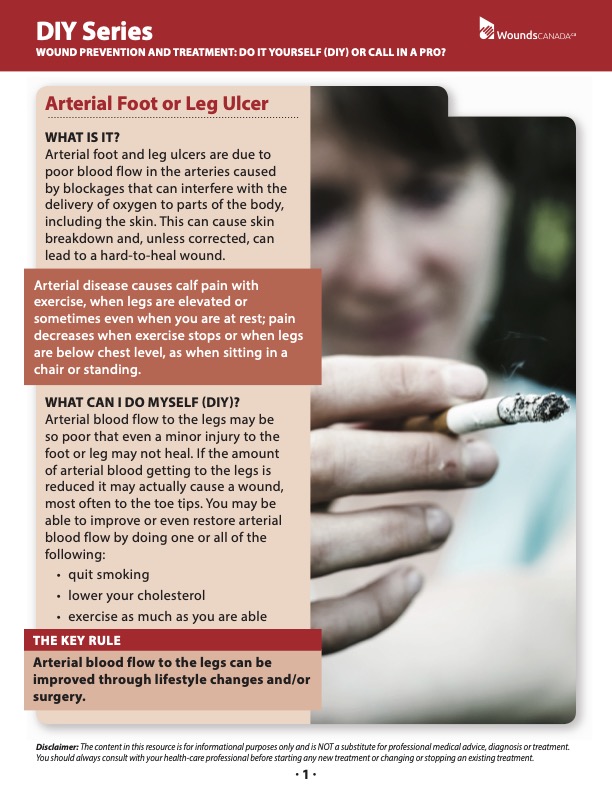
Arterial foot and leg ulcers are due to poor blood flow in the arteries caused by blockages that can interfere with the delivery of oxygen to parts of the body, including the skin. This can cause skin breakdown and, unless corrected, can lead to a hard-to-heal wound. Find out the top three actions you can do on your own to improve or restore arterial blood flow by clicking on the link!
Neuropathic/Diabetic Foot Ulcer
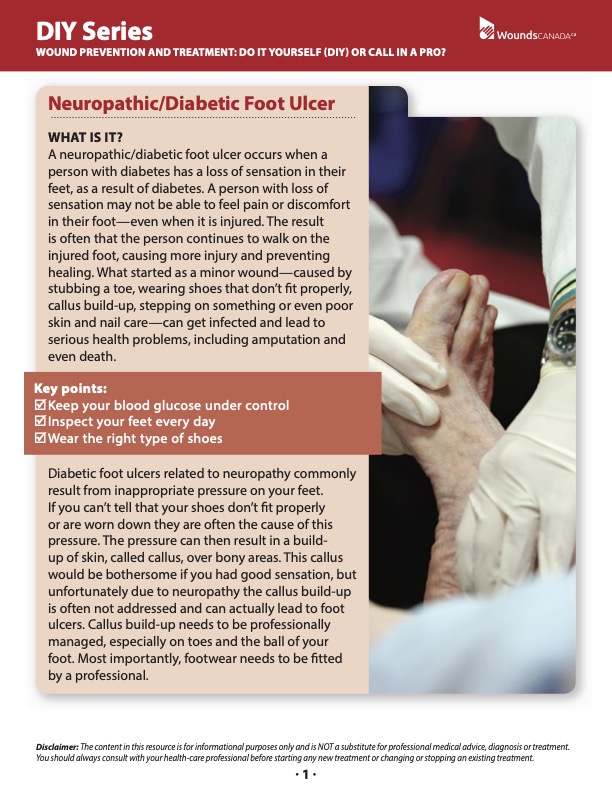
A neuropathic/diabetic foot ulcer occurs when a person with diabetes has a loss of sensation in their feet, as a result of diabetes. A person with loss of sensation may not be able to feel pain or discomfort in their foot—even when it is injured. Visually inspecting your feet every day is the key DIY strategy for this skin health condition. Read the full PDF to find out other recommendations.
Incontinence-associated Dermatitis (IAD)
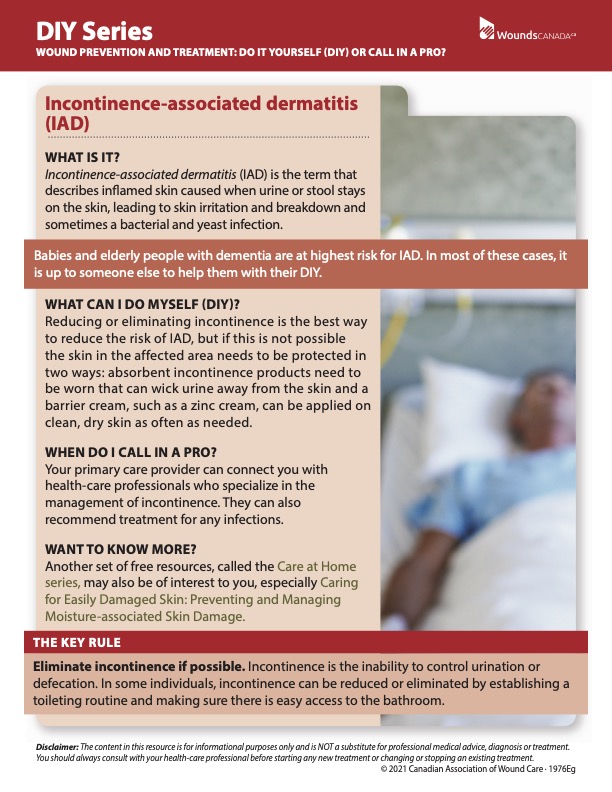
Inflamed skin occurs when urine or stool stays on the skin, leading to skin irritation and breakdown and sometimes a bacterial and yeast infection. This one's a little different than the others—since most cases of IAD occur in elderly patients with dementia or babies, it is up to someone else to take charge of the DIY aspect.
Intertrigo
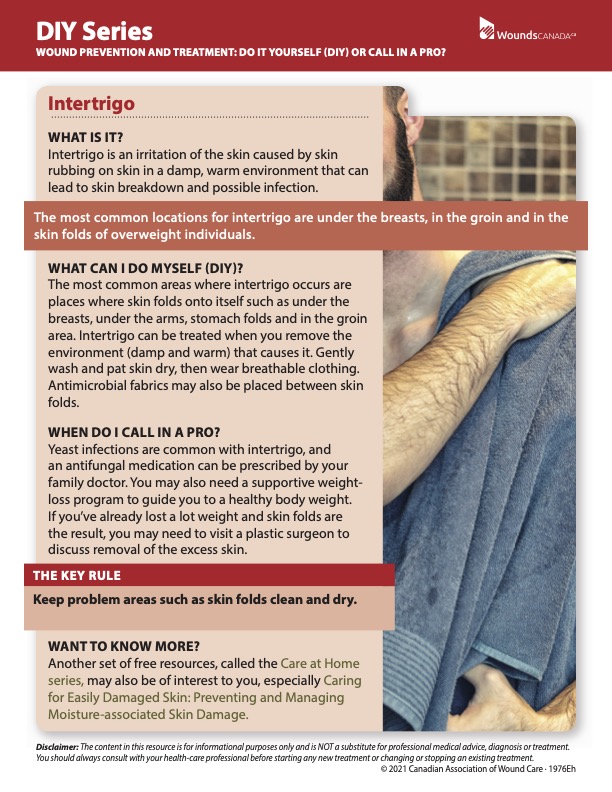
When skin rubs against skin in a damp, warm environment, it can lead to skin breakdown and possible infection. The most common locations for intertrigo are under the breasts, in the groin and in skin folds. Read the full PDF for preventative DIY tips and direction on when you need to call in a pro.
Pressure Injury
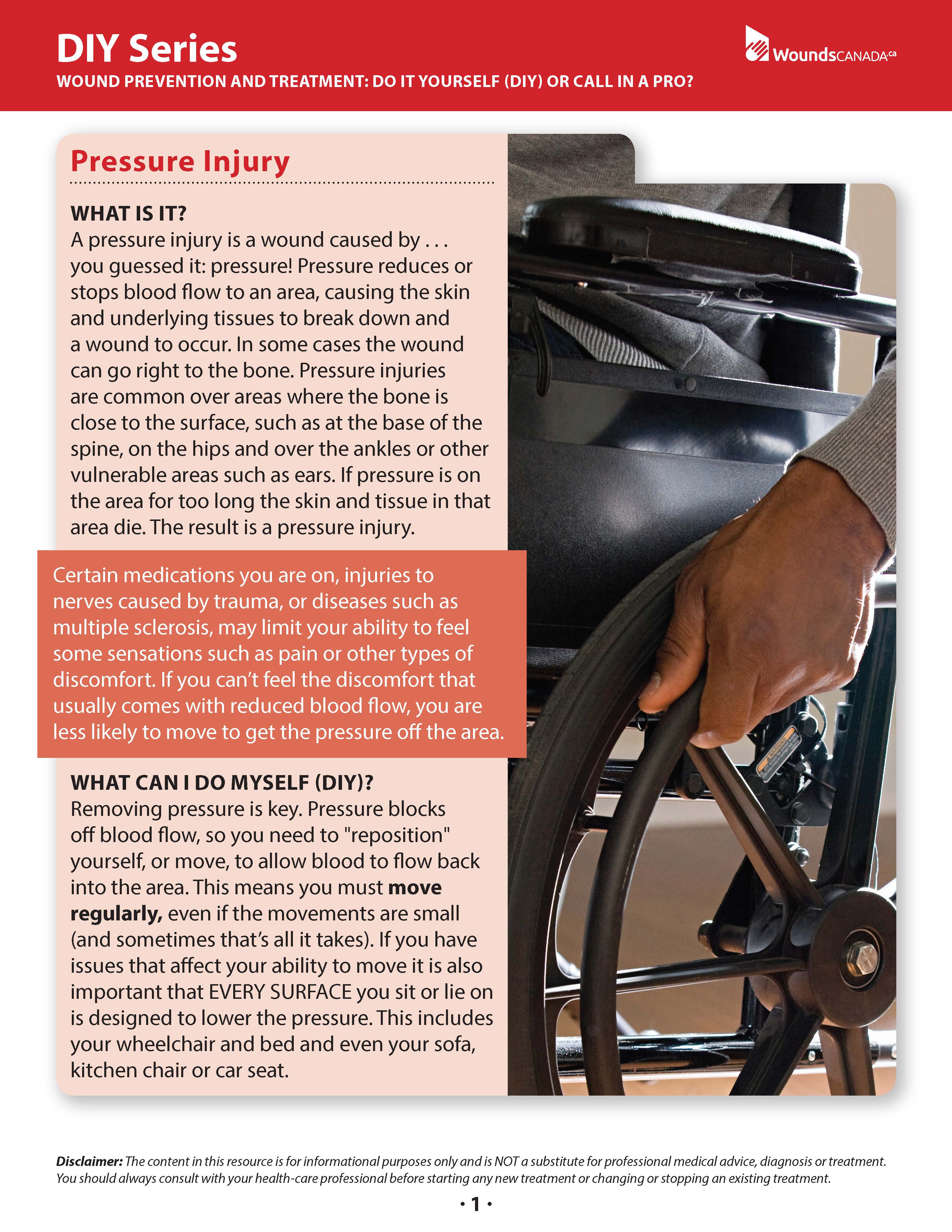
Pressure reduces or stops blood flow to an area, causing the skin and underlying tissues to break down and a wound to occur. They occur most often in areas where the bone is close to the surface, such as the base of the spine, on the hips, over the ankles or on other vulnerable areas like the ears.
Skin Tear
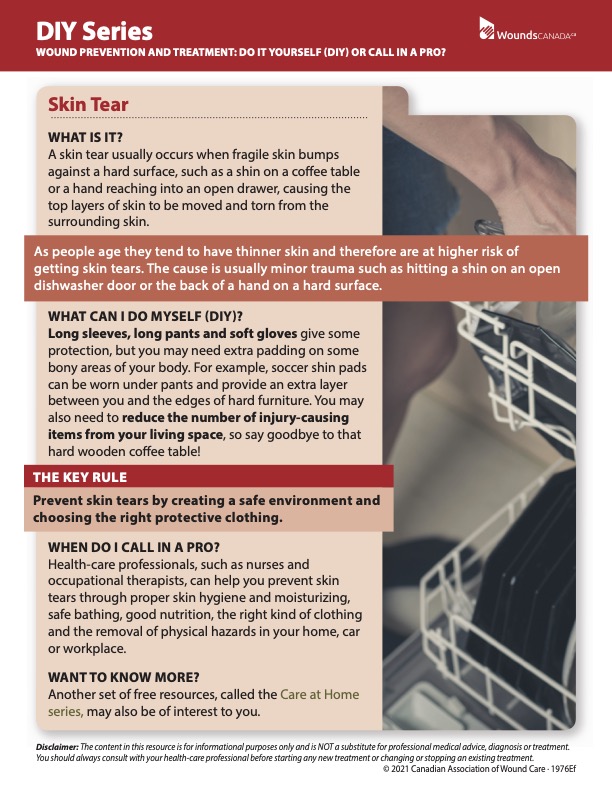
As people age they tend to have thinner skin and therefore are at higher risk of getting skin tears. The cause is usually minor trauma such as hitting a shin on an open dishwasher door or the back of a hand on a hard surface. Luckily, there are all kinds of preventative and protective measure you can take to reduce the liklihood of skin tears: read the full PDF for more details!
Venous Leg Ulcer
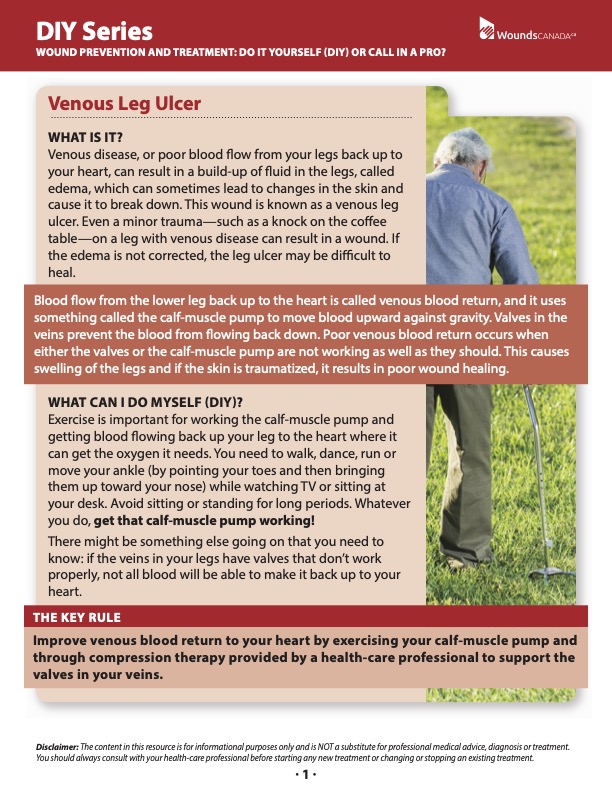
Blood flow from the lower leg back up to the heart is called venous blood return, and it uses something called the calf-muscle pump to move blood upward against gravity. Poor venous blood return occurs when either the valves or the calf-muscle pump are not working as well as they should. This causes swelling of the legs and if the skin is traumatized, it results in poor wound healing. Exercise is the key to getting that calf-muscle pump going!
